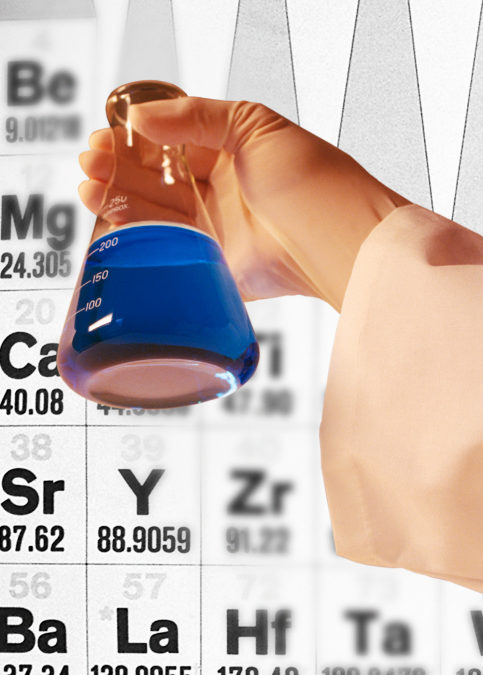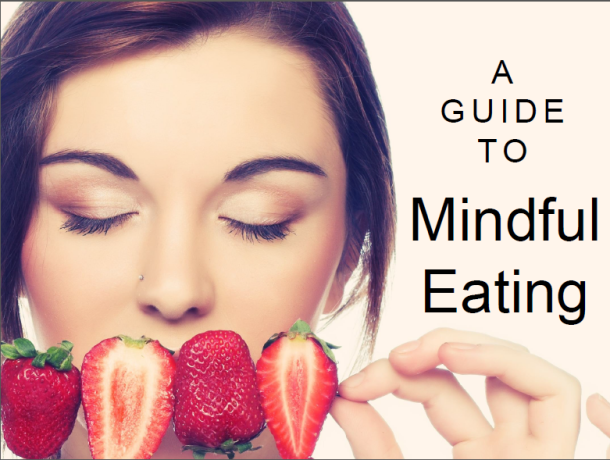
by dnshah | Aug 28, 2017 | Health and Wellness Tips, Obesity, Stress Management
Not all chemicals are potentially hazardous, but some can be. Toxins are defined as consumables (eaten, drank, inhaled, absorbed through skin) which are not used or needed by the body. An average person’s exposure to any one toxin is low, but when we are bombarded with them – it can become a burden on our body to get rid of them. Our bodies are designed to expel toxins, but when our exposure increases and the rate which we absorb them is greater than the rate our bodies can excrete them, our immune system can become overwhelmed. When this happens over a long duration, we become more vulnerable to chronic illness.
Are you exposed to increasing toxins in your environment? The facts are that today’s environment is increasingly inundated with toxins – think pesticides in soil, chemicals in water, contaminants in air, and that doesn’t even factor what has happened to our food supply (heavy metals, genetic modifications, hybridization, etc.) Some of the more worrisome environmental toxins are flame retardants, formaldehyde, parabens, BPA, and pesticides.
Despite that our bodies are designed to expel toxins, limiting our exposure where we have some control is a wise strategy to keep our distance from ill health.
Flame Retardants
Because of strict flammability standards, most furniture has been built with flame retardant chemicals – think sofas, chairs, cars, plane seats, even infant car seats. The worry is that some of the chemicals (at a molecular level) will end up on our hands, and eventually on our faces, mouths, and bodies. The most worrisome chemical for infants is PBDE (poly-brominated diphenyl ethers), which are fat-soluble and can enter the brain during development. The concerns are lower IQ and a shorter attention span, hormone dysregulation (thyroid disorders) and cellular disruption (DNA damage) .Children crawling on all fours in the carpet may be more exposed to this chemical dust (molecular level). Some of the more toxic chemicals are phased out over time, so it is not a bad idea to replace old furniture and carpets. Other ideas to mitigate this problem include regular vacuuming with a HEPA filter vacuum, replacing upholstery on chair cushions, and washing hands before eating. More out of the box thinking has shown that sweating helps the body force out chemicals, so it’s yet another reason to break a sweat – even if you use a sauna or infrared blanket to force perspiration.
Formaldehyde
It is found in wood glue, hence also in furniture and flooring. High concentrations of formaldehyde have been linked to respiratory issues, headaches, and nosebleeds. It may cause nose, throat, and eye irritation and trigger asthma attacks. In 2011, formaldehyde became classified as a human carcinogen after studies linked it with nose cancer and myeloid leukemia. If you are installing new wood flooring in your home, be sure to air out the product before, during, and after installation. Be advised that some hair treatments utilize formaldehyde (ie Brazilian blowouts), but a few times per year should be within acceptable levels.
Parabens
Parabens are in many sunscreen and cosmetic products, usually listed under butylparaben, methylparaben, propylparaben, or Alkyl parahydroxy benzoates. Exposure to parabens can increase our risks of certain cancers and chronic illnesses according to several studies. Science has also verified that parabens can cross the placenta cord, so we have to caution against using excessing personal products and READ labels carefully. Seek healthier alternatives and ditch the chemicals.
BPA
That chemical that is still found in some plastics which could be hiding in your containers, water bottles, canned goods, and kitchen appliances. Don’t heat food in plastics – even if labelled BPA free. We can’t control all things, but what we are able to minimize goes a long way. the chemicals that we do absorb or consume can be detoxed naturally. The simple act of sweating also helps the body get rid of BPA, so you are encouraged to do more “sweating” daily!
Pesticides
Our agricultural industry is simply trying to make ends meet and work within safety levels for all of us, BUT there is always a window of time that it takes for studies to drive a point home and inspire change. In that window of time, we’re being exposed to organic pollutants in our food supply. Some of these are endocrine disruptors, and they have shown to increase our risk of thyroid issues as well as Type 2 Diabetes. The best way to minimize our exposure is to buy organic for at least the dirty dozen lists.
Resources
- International Agency for Research on Cancer(17 June 2011). “Agents Classified by the IARC Monographs, Volumes 1 – 102” (PDF). Lyon, France: International Agency for Research on Cancer. pp. 3, 19. Retrieved 11 November 2011.
- Hathaway GJ, Proctor NH, Hughes JP, and Fischman ML [1991]. Proctor and Hughes’ chemical hazards of the workplace. 3rd ed. New York, NY: Van Nostrand Reinhold.
- Blood, urine, and sweat (BUS) study: monitoring and elimination of bioaccumulated toxic elements, https://www.ncbi.nlm.nih.gov/pubmed/21057782
- Human excretion of bisphenol A: blood, urine, and sweat (BUS) study,https://www.ncbi.nlm.nih.gov/pubmed/22253637
- Human elimination of phthalate compounds: blood, urine, and sweat (BUS) study , https://www.ncbi.nlm.nih.gov/pubmed/23213291
- Human elimination of phthalate compounds: blood, urine, and sweat (BUS) study. https://www.ncbi.nlm.nih.gov/pubmed/23213291
- Genuis, Stephen J., Kevin Lane, and Detlef Birkholz. “Human Elimination of Organochlorine Pesticides: Blood, Urine, and Sweat Study.” BioMed Research International2016 (2016).
- Arsenic, cadmium, lead, and mercury in sweat: a systematic review,https://www.ncbi.nlm.nih.gov/pubmed/22505948
- Human Excretion of Polybrominated Diphenyl Ether Flame Retardants: Blood, Urine, and Sweat Study, https://www.ncbi.nlm.nih.gov/pmc/articles/PMC5360950/;
- Personal care product use among adults in NHANES: associations between urinary phthalate metabolites and phenols and use of mouthwash and sunscreen, https://www.ncbi.nlm.nih.gov/pubmed/27168391
- Chronic exposure to organochlorine compounds and health effects in adults: diabetes and thyroid diseases , https://www.ncbi.nlm.nih.gov/pubmed/20677670

by dnshah | Apr 5, 2016 | Age Defying, Diet and Weight Loss, Health and Wellness Tips, Obesity, Stress Management
I’ve been talking about the Blue Zone study in the last few months. The Blue Zones are the places where the average age of population is significantly higher. Earth’s 5 Blue Zones hold the most centenarians and their wisdom on longevity of life. Why do some live longer than others? The longest living woman resides in Italy. She just celebrated her 115th birthday. What secrets could she share with us?
The latest thoughts on the subject are that longevity can be influenced by genetics (10%), environment (50%), and diet & exercise (40%). What this means is that although we can’t control our genes, it can’t determine our fates either. The things we can control have a greater say in our longevity.
One dietary strategy promoting our longevity is to eat superfoods daily that enhance our immunity. If our immune systems remains strong and healthy, so do we. “G-BOMBS” is a powerful acronym detailing out various food types to eat daily. G-BOMBS stand for Greens, Beans, Onions, Mushrooms, Berries, and Seeds.
Greens are no surprise on this list as there are so many phytonutrients, antioxidants, vitamins, and minerals in our plant-based nutrition. Also there are so many varieties and tastes to accommodate even the selective eaters. Add some kale or spinach to your meal today!
Beans are a term used to describe all plant-based proteins, including dals, legumes, pulses, and peas. They are the tiny seeds of life to a plant, and consist of good proteins. Red lentils are my favorite.
Onions are protective alliums, and when combined with garlic become ideal remedies for cold and flu infections. People who consume onions and garlic regularly can have up to 56% reduction in their risk of colorectal cancers.
Mushrooms are a category of fungus with many different varieties, shapes, sizes, and flavors. They are shown to be potent anti-cancer nutrition as women that regularly eat mushrooms have a 64% reduction with risk of breast cancer. Think about that the next time you grill a Portobello!
Berries are powerful antioxidants which protect the body from cells going rogue, not to mention a great source of vitamins, minerals, and phytonutrients. They also boost brain function and immunity. My smoothie is not complete without a handful of colorful berries.
Seeds include tasty complementary proteins and fats when combined with other plant-based foods. Seeds have great omega fatty acids which satisfy and complete proteins that aid in immune protection. I enjoy eating pumpkin seeds in cereals, salads, and even smoothies.
When G-Bombs are consciously consumed in a regular diet, one’s immune system becomes stronger and better protects against ailments. So the next time you are choosing what to eat, think G-Bombs for your health!

by dnshah | Dec 15, 2015 | Diet and Weight Loss, Health and Wellness Tips, Obesity
I empower my clients to successfully meet their customized health goals through information and lifestyle changes. One of the things I encourage my clients to do is to “exergame”. Movement is critical to overall physical well-being. Theoretically when buddies are striving for maximum movement each day, they can playfully compete with each other on the number of miles they walked/ran or the number of steps they took each day. Exergaming gear (Fitbit, Jawbone, wrist pedometers, etc) seems to be very current on trend, and it seems to help people measure their progress with others. That seems to be beneficial for the most part when the buddies are similarly active.
If a more sedentary person was encouraged to join their team, however, the results are not so positive. This third person would start to feel like a third wheel because they may not be able to compete effectively with the other two. When you push your body physically and mentally to compete, and you can’t ever come out on top, what does this do psychologically? It is not positive, as I know people that lost their motivation because they couldn’t fit in with their peers. The unfortunate thing is that these exergaming technological gear (Fitbits and pedometers, and jawbone, etc) was designed for people to get motivated to do more than they normally would. In actuality, there is an active subset that is being motivated to do MORE; but a sedentary subset that it may not be reaching or helping.

by dnshah | Dec 5, 2015 | Health and Wellness Tips, Obesity
- What is sugar?
- Do we need sugar, and if so, why?
- What is the sugar cycle?
- What ailments excessive sugar consumption cause?
What is sugar?
“Sugar” refers to several molecules that belong to a family of carbohydrates. They are short carbohydrates. “Sugar” includes glucose & fructose (monosaccharides), and sucrose (1 glucose + 1 fructose). Ultra long carbohydrate chains (glycogen) are not considered “sugar”. Longer carbohydrate chains are unrefined fuel, and the body has to “burn” them by first breaking them down. So our bodies prefer to STORE longer chain carbohydrates and burn the more efficient shorter chain carbohydrates.
Do we need sugar, and if so, why?
Our brain is highly dependent on our blood’s sugar supply for proper brain function. That said, we don’t NEED it to be short chain, because our body can go through the extra steps of breaking down the longer chain carbohydrates and create shorter blocks for efficient fuel.
Our brains have evolved a strong appetite for sugary flavor because it needs fuel. Thousands of years ago this was a survival urge because it led us to eat fruits, and we considered it a treat! It kept our neural networks developed and kept us alive. Today however with the vast choices of foods in market, the shorter chain carbohydrates, refined sugars, we are becoming involved in a cycle of pleasure while eating this sugar. Note that I’m not referring to natural sugar found in real food.
What is the sugar cycle?
Pleasure/rewards motivate us to maintain our survival habits: eating, drinking, reproducing, movements, etc. Brain-reward stimulation studies show that we receive pleasure when our brain regions are stimulated. Our neural systems associate rewards with behaviors (gathering food, working for a living, grocery shopping, etc).
Addictions occur when people want to do activities that continually stimulate our pleasure/reward stimulating brain centers. There is now evidence that sugar consumption can also stimulate our brain’s pleasure activation. So, in a way, we can become addicted to sugar when we associate pleasure/rewards with eating sugar. If we are raised on the belief that we deserve brownies when we were good, then as adults, we will go for brownies on our “good” days. Also the amount of pleasure we receive diminishes over time with the amount of our initiating foods. So we will need more sugar to get the same “pleasure.” So this can actually create a sugar cycle, where we crave more each time we need pleasure. It is seen as an actual addiction similar to hard drugs.
What ailments can excessive sugar consumption cause?
Oral disorders with teeth and gums
Sugar cycle addictions can lead to obesity or diabetes
Acidic conditions within the body caused by excessive sugar can lead to multi-faceted symptoms from yeast infections to joint /connective tissue issues to gastric symptoms to autoimmunity to cancer. It depends upon genetic vulnerabilities, environmental conditions, and lifestyle factors.
- Yeast infections: sugar can increase the risk for candida infections. Candida is responsible for a variety of illnesses ranging from discomfort to death
- Joint / Connective tissue: sugar can cause pain and discomfort due to chronic inflammation. Can start slow and could lead to a full-blown disease that limits mobility
- GI symptoms: sugar can alter the healthy gut flora causing an imbalance which over time can lead to chronic inflammation, allergies, and in impaired immune system
- Autoimmunity: can impact not just GI issues but also neural performance contributing to (depending on genetics) issues such as Alzheimer’s, Parkinson’s, MS, and more… Currently there are over 150 autoimmune diseases listed by the AARDA, American Autoimmune Related Diseases Association (www.aarda.org).
- Cancer: According to the American Cancer Society, there are over 100 types of cancer that can cause pain and discomfort to death.
Bottom line is that we don’t need REFINED SUGARS. Our bodies are designed to get what is needed from real food nutrition versus processed foods. How best can you get started? Seek out a health coach that can guide you to success on your own customized health goals from clean eating, weight loss, or even managing chronic illness.






